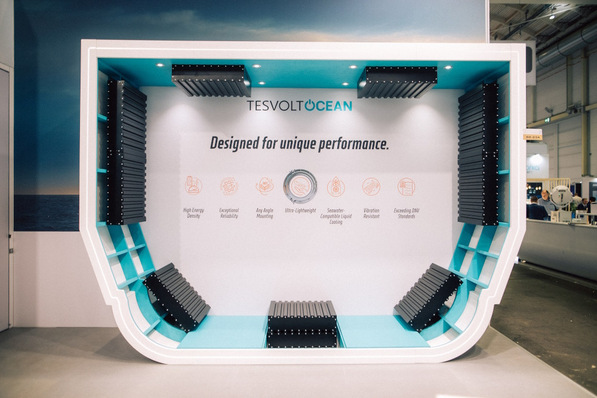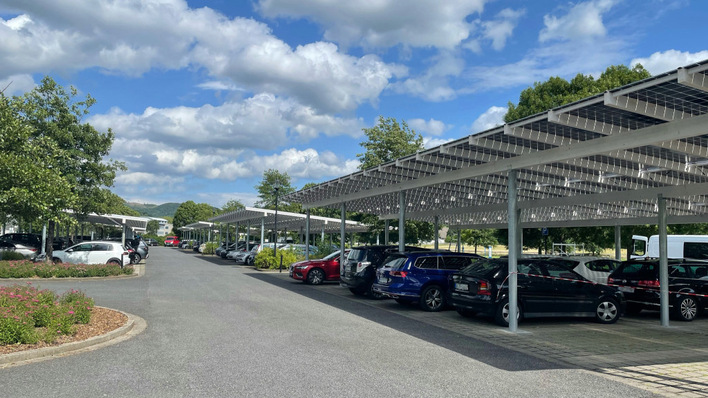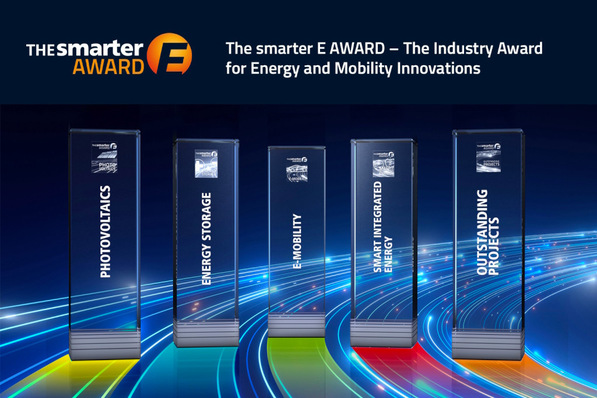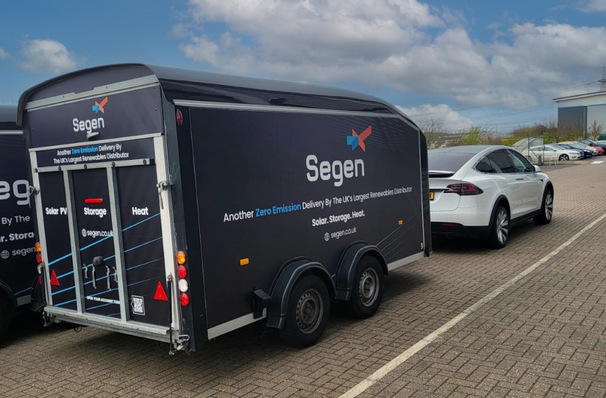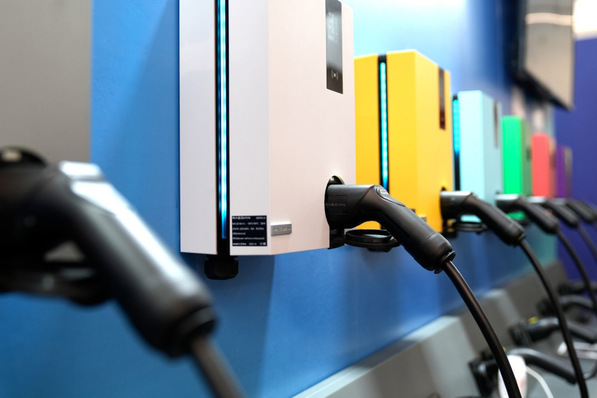Much is being said about the lack of charging infrastructure for EVs. This most of all poses major challenges to the operators of multi-storey car parks. How can such a feat be accomplished?
Ulrich Trattmann: For Rheinenergie we fitted their staff multi-storey car park with 22 charge points for the EVs of employees. The car park has about 1,000 parking bays. The first phase involved eight 11-kilowatt charge points, followed by another 14 in a second phase. The plan now is to add another 16, making for a grand total of 38.
Based on what assumptions did you plan this installation?
For one, we assumed that the employees would leave their cars in the car park all day. So we were not going for high-performance rapid charging, but for a compromise between output and charging times.
How did you deal with the technical side of it?
You see, the problem is that buildings tend not to have sufficient energy capacity in case every car draws full power at the same time. That usually puts exceeds the limit of what the grid connection of the building can handle in terms of current and output and triggers the circuit breakers. So what is required is a two-stage and dynamic load management system. The first stage controls the flow of energy at the point of connection to the grid, while the second stage manages the power at the point of charge – both dynamically.
Why have two separate power feeds?
The eight charge points were hooked up to the main building feed, which can take 63 amperes. The 14 charge points from the second phase are hooked up to a different power feed that is rated for 100 amps. To be on the safe side, we limited the charging current to 80 amps, because, for instance, the car park’s ventilation system is also connected here. In case it starts up, there would only be 60 or 70 amps available.
How can the management system balance such demands?
The balancing technology will have to react very quickly to prevent blowing a fuse. The two-stage dynamic charge management system was realised in concert with Hardy Barth from Bavaria. Hardy Barth also provides the charge points that were utilised here.
What are the advantages of the dynamic management of charging currents?
We assumed that Rheinenergie’s employees would drive a variety of EV models, each with their specific charging characteristics. Also, the state of charge of the vehicles can be different – from almost empty to nearly full. The charge management needs to be able to fully charge any EV at any charge point over the course of a day without overloading the main connection of the building.
Maintaining load symmetry between each of the feeds was probably also a challenge…
We needed to design the charge points in such a way as to avoid imbalances during single-phase charging. It must not happen that all single-phase charging systems draw power via L1 all at once. Of course, we aim to distribute the load evenly across power feeds.
To achieve that, charge points need to be able to coordinate. How much expensive were the management and communication systems?
For this project, we installed the entire management system, the fuses and the communication technology in one cabinet. It was delivered ready for connection and pre-assembled to the car park. In this way, we were able to significantly reduce the effort and costs involved in installation. As a result, intelligent sockets would in future be completely sufficient to charge the cars. Our strength lies in the management system, i.e. the cabinet.
Does the expense of retrofitting the electrical installation put many owners of multi-storeys off installing charge points?
Yes, that is a considerable obstacle. Thanks to our pre-assembled cabinet, the electrification of the charge points becomes very simple. The technician just has to connect the cabinet to the building’s main feed and prepare the charge points – done! Also, that saves many metres’ worth of wiring.
When did the charge points come online?
We installed the first expansion stage in December 2017. In May 2018, the realised the second stage. The cabinet was delivered to the site pre-assembled and pretested. Eight charge points were connected in a single day.
What are the advantages of dynamic load management as part of an existing electrical system?
Clearly, there is no need for operator of the car park to invest in a stronger power connection to the grid. All the same, all charge points are fully operational and can charge at the same time. Also, every charge point is visualised through an app and all the charging data is recorded. The system has RFID and backend capability. For example, in the case of the aforementioned car park, billing is taken care of via Rheinenergie’s Charge Cloud. The chargers are free to use for employees, but it is also possible to set it up for individual billing.
What was especially challenging from a technical perspective?
Defining the proper parameters within the system was particularly tricky. Our solution turned out to be very well-suited for serving multiple charge points. As well as being much more inexpensive than having to set up an additional transformer station for connecting to the grid. After all, every building has a limited power input. I predict that power inputs will become very expensive in the future. But car parks will soon need 100 charge points or more instead of a mere 22. And then, doing without a dynamic load management system with smart switching cabinets will be impossible.
Multi-storey car parks are often also ideal for solar roof arrays or large-scale carports at the top level. Can you also integrate solar power into the charging system?
Of course, the control system allows directly integrating photovoltaics. For instance, it can take the solar power and send it directly to the EVs. To that end, a variety of modes of operation are possible as well as the integration of larger storage batteries to act as a buffer for charging output and energy. There are thousands of multi-storeys out there waiting to be converted to make them future-proof for the era of electric mobility. This is a huge market.
Have you built systems with storage batteries?
Only one, so far. It was a system with two charge points and a solar carport. The solar output was nine kilowatts, the storage capacity six kilowatt hours. It was a double carport with two charge points that each produced 11 kilowatts, where we also made use of peak load management.
What exactly was Posid’s contribution?
We are competent in controlling systems via the dynamic load management. We designed the switching cabinet and the overall system. We do of course, if desired, provide all of the charging technology. The system is scalable and can be expanded with further modules. It is conceived in such a way that it can include between four and 20 charge points. Any installing company can provide this to their customers.
Is charging limited to 11 kilowatts?
No. 22 kilowatts is also possible. For the car park at Rheinenergie we chose 11 kilowatts, because the employees’ cars are being charged all day. Higher charging outputs were not needed.
What applications are particularly suitable for your system?
We conceived it for semi-public applications. These include multi-storey and solar car parks of companies, either for their staff or their company fleet. It can also be interesting for hotels that might use it to charge their own EVs in this way and rent them out to their guests.
Is it also suitable for public on-street charging?
Probably not. Public charging requires proper charging stations, a service provider for billing and 24/7 customer service. That will be up to the business of utilities. It is what they are good at. (HS)
Stay informed, get our newsletter twice a week.
Register here: https://www.pveurope.eu/Newsletter
Read more about solar modules.
Read more about solar mounting systems.
Read more about solar energy storage.



